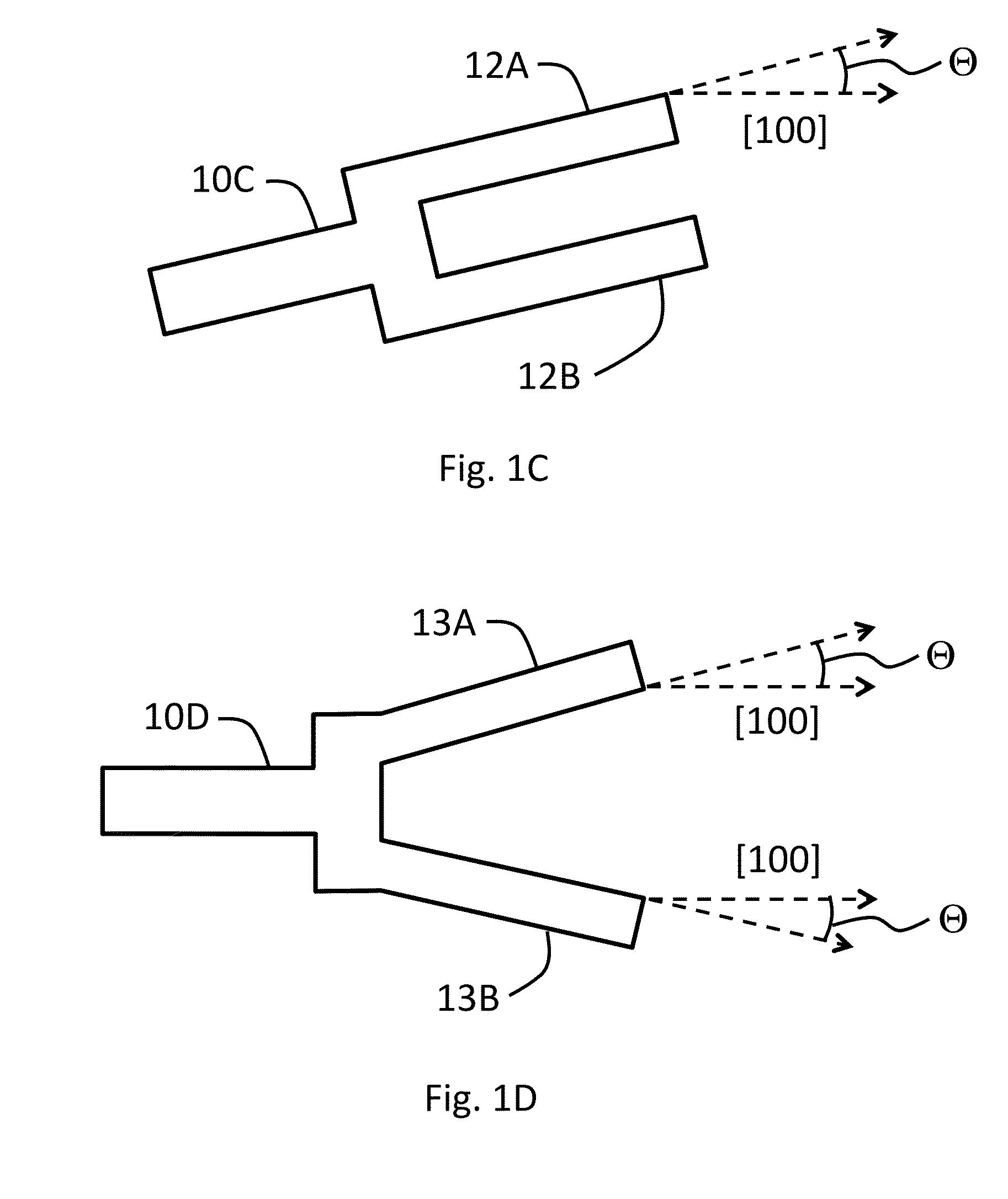Temperature compensated beam resonator
a beam resonator and temperature compensation technology, applied in the field of microelectromechanical resonators, can solve the problems of high temperature drift of resonance frequency, significantly worse temperature performance of silicon resonators, and documenting, but not teaching how to achieve a broader stable temperature range of operation. , to achieve the effect of improving the quality factor of the resonator and avoiding parasitic resonance in the resonator
- Summary
- Abstract
- Description
- Claims
- Application Information
AI Technical Summary
Benefits of technology
Problems solved by technology
Method used
Image
Examples
Embodiment Construction
[0064]FIG. 1A shows a resonator consisting of a single beam 10A manufactured on a (100) wafer and having a length L and width W. The beam 10A is tilted with respect to the [100] crystal direction by an angle Θ. The tilted beam 10A can be anchored to the surrounding support structure (not shown) from an anchoring point at one longitudinal end thereof or in the middle of one or both longitudinal sides, depending on the intended resonance mode to be excited. Preferably anchoring takes place at one or more nodal or quasinodal points of the resonance mode at the perimeter of the beam 10A.
[0065]A drawback in the resonator of FIG. 1A is that it is not symmetric with respect to the [100] direction, whereby parasitic resonance modes may arise in the beam along with the main resonance mode. These parasitic modes may decrease the quality factor of the resonator, and may even affect the TCF characteristics of the main resonance mode.
[0066]The resonator of FIG. 1B avoids the drawback. It compris...
PUM
 Login to View More
Login to View More Abstract
Description
Claims
Application Information
 Login to View More
Login to View More - R&D
- Intellectual Property
- Life Sciences
- Materials
- Tech Scout
- Unparalleled Data Quality
- Higher Quality Content
- 60% Fewer Hallucinations
Browse by: Latest US Patents, China's latest patents, Technical Efficacy Thesaurus, Application Domain, Technology Topic, Popular Technical Reports.
© 2025 PatSnap. All rights reserved.Legal|Privacy policy|Modern Slavery Act Transparency Statement|Sitemap|About US| Contact US: help@patsnap.com



